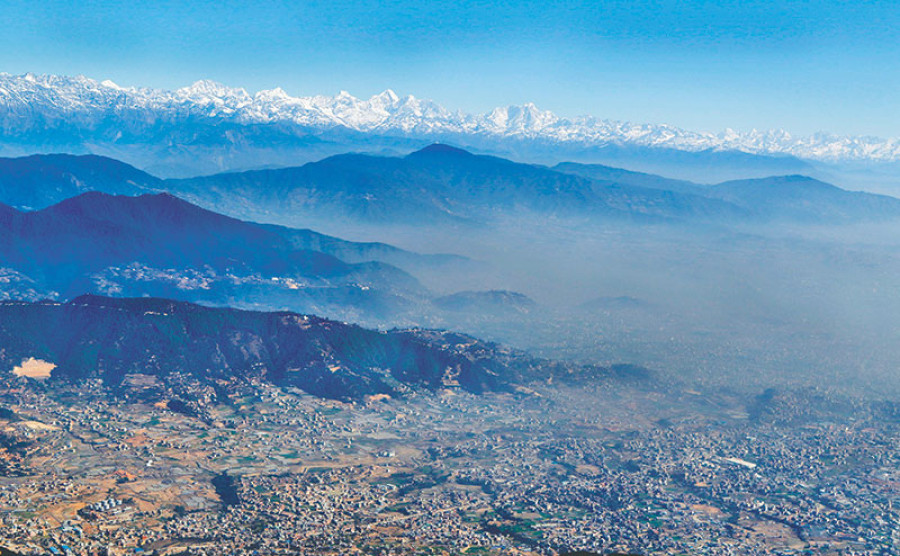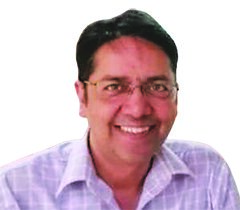Miscellaneous
How Un-Green is My Valley
During a recent visit to my doctor, he noted that I had put on weight. I had noticed that my waistline was increasing by ever tightening trousers, some of which I have in fact been wearing for over twenty years. Thanks to my near-constant body weight and waistline—72kg and 32’.
Akhilesh Upadhyay
During a recent visit to my doctor, he noted that I had put on weight. I had noticed that my waistline was increasing by ever tightening trousers, some of which I have in fact been wearing for over twenty years. Thanks to my near-constant body weight and waistline—72kg and 32’.
Still, it’s one thing to feel bloated but something else to be warned by an experienced physician that you want to lose weight. “In all your visits, this is the first time I have noticed a bulging belly. You want to cut it out immediately,” he explained.
“Medically speaking, it’s far easier to stay fit and not gain weight, than trying to shed kilograms after you are overweight,” said the good doctor, smiling.
The first thing I did when I returned home that day was climb on the weight scale. Yes, my weight was close to 76 kgs. I suddenly felt a lot more bloated than I had before the visit to the doctor.
That really got me thinking. I wanted to trace the recent surge in my waistline. If my dietary habits remained the same and I had no health issues (as the doctor said), why the steady uptick?
It wasn’t difficult to find the answer. And it was interesting in a strange way. All this started exactly two years ago, after the big earthquake.
Walks, not always in the mornings, given my irregular work hours, have been a defining feature of my physical activity for decades. I just love them, especially the solitary ones. During these walks, I think. I rest. I meditate. I spin in my head what to write for the day. Walks make me relax like nothing else.

Lately, I have been very irregular with my walks, a trend that in fact started with the earthquake. I live in Balkumari, by the Manohara River, and I would take various twists and turns westward towards Patan; mostly arriving at Patan Durbar Square during the morning prayers, or northward to join young and aspiring martial artists at the Football Stadium in Chyasal. Or I would just walk along the roads on either side of the Manohara corridor, full of walkers like me.
Then it all changed.
The Ring Road reconstruction at the Balkumari point and up eastwards to Koteshwor and westwards to Gwarko came to a standstill after the earthquake. The quaint road by the Manohara adjoining my home became dusty and dangerous with the traffic that had routed itself away from the forever-under-construction Ring Road.
After the doctor’s reminder, I realised I hadn’t gone out for a serious morning walk in almost two months.
There’s a reason I have come to fear morning outings. In a dangerously polluted Kathmandu, mornings, supposedly the best time of the day for workouts, have become the worst.
The newly installed Air Quality monitoring system at Phohora Durbar in the Capital measures PM2.5—which includes pollutants that penetrate deep into the lungs and in the cardiovascular system, posing the greatest risks to human health—by converting it into an Air Quality Index (AQI). Think of the AQI as a yardstick that runs from 0 to 500—the higher the AQI value, the greater the level of air pollution and the greater the health concern. For example, an AQI value of 50 represents good air quality with little potential to affect public health, while an AQI value of over 300 represents hazardous air quality.
The AQI at Phohora Durbar on April 11, for instance, was 204 (which is classified as very unhealthy.) This was in fact the worst AQI among all US State Department’s installed monitoring systems in the region. New Delhi, for example, had a value of 126, Kolkata had 178 and Dhaka had 175. Readings also suggest that the pollution level is at its worst during the mornings, between 6-9 am. It is also the time that most people are out exercising, hence breathing heavily, or going to school or work.
Frustrated, I took refuge to my old treadmill, which had by now turned into a clothes hanger—forlornly relegated to the corner of our bedroom. Still, the doctor’s warning kept ringing in my ears and I would do my best to put in 30-40 minutes every day on the machine. I must confess I don’t enjoy treadmills. It’s too routine, too dull and too mechanical. It just doesn’t have the feel of a walk.

But I soon found that the pollution level inside the house is very high too. I had thought that it wouldn’t be so bad until a doctor-friend visited our home and reminded me otherwise. And so my treadmill ‘walks’ stopped too.
Very recently, I got an air-filter machine. This is my last desperate measure to clean up the air and resume my fitness regimes until my next visit to the doctor. I will update the doctor, and you, how well I will fare the next few weeks. I am hoping the Ring Road reconstruction will be complete by the time of monsoon and the air-filter (which wears a dark and dusty look within days of use) will go too.
Come local elections, any candidates who talk about open spaces and improving air quality in Kathmandu Valley will be high in the minds of tens of thousands of voters who have suffered privately like me.
I desperately need to resume my walks, preferably without the assistance of the mechanical constructs.
 A smog covers Kathmandu on Friday (April 28, 2017)
A smog covers Kathmandu on Friday (April 28, 2017)



 8.12°C Kathmandu
8.12°C Kathmandu








%20(1).jpg&w=300&height=200)

